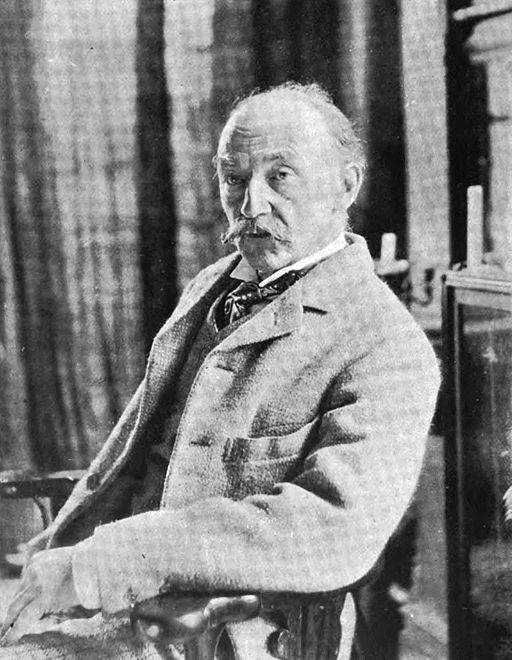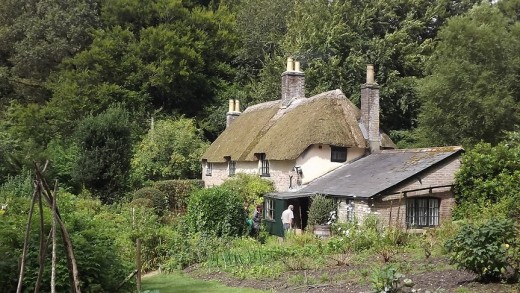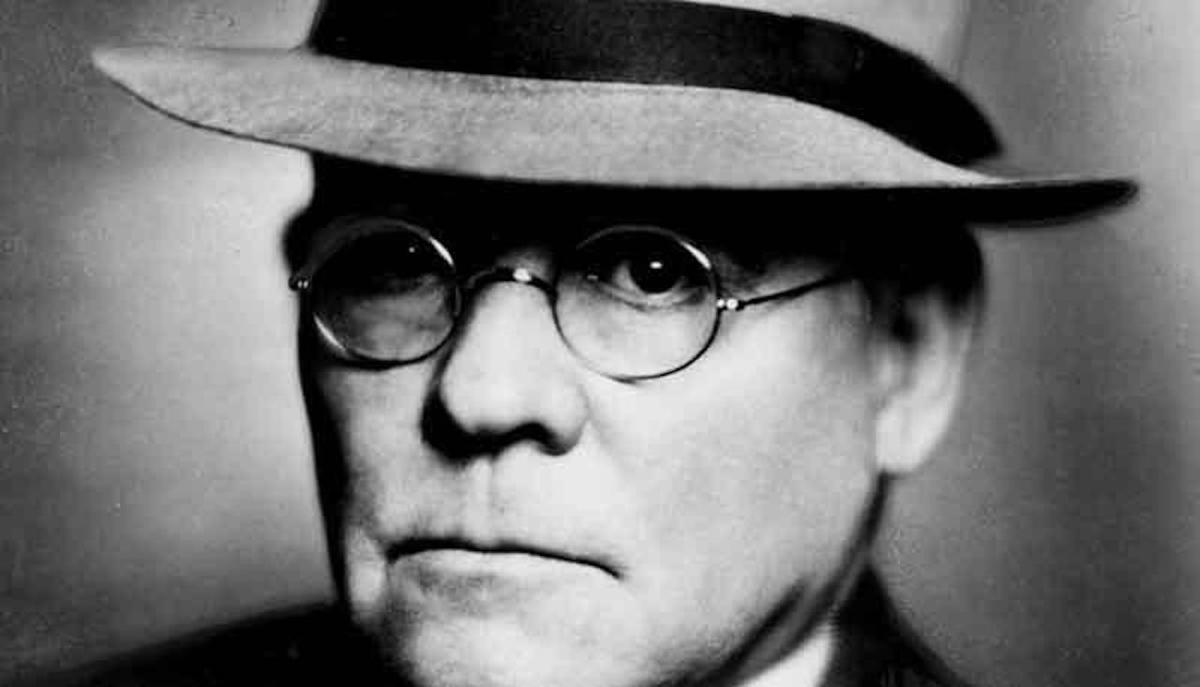"A Bird-Scene at a Rural Dwelling": a poem by Thomas Hardy

The Poem
When the inmate stirs, the birds retire discreetly
From the window-ledge, whereon they whistled sweetly
And on the step of the door,
In the misty morning hoar;
But now the dweller is up they flee
To the crooked neighbouring codlin-tree;
And when he comes fully forth they seek the garden,
And call from the lofty costard, as pleading pardon
For shouting so near before
In their joy at being alive:—
Meanwhile the hammering clock within goes five.
I know a domicile of brown and green,
Where for a hundred summers there have been
Just such enactments, just such daybreaks seen.
Discussion
The poem dates from January 1925, being published in “Chamber`s Journal”. It was collected in Hardy’s volume “Human Shows” that appeared in July of that year. Hardy had been asked by the editor of Chamber`s Journal to submit something to mark the 60th anniversary of his first contribution to that journal, which was an essay entitled “How I Built Myself a House” that had appeared in March 1865. This had been Hardy’s first work to appear in print.
The poem is typical of Hardy in that it has an experimental format, as regards both rhythm and rhyme-scheme. It consists of two stanzas, the first having eleven lines, the second having three. The rhyme-scheme of the first stanza is AABBCCDDBEE and the lines of the second stanza have the same rhyme, not being one that appears in the first stanza.
A syllable count of each line shows that Hardy was also experimenting with the rhythm – 12,12,7,7,9,10,12,13,7,8,11 (first stanza), 10,10,10 (second stanza). The first stanza therefore consists mainly of rhymed couplets of differing lengths, but with eleven lines this pattern has to be broken, which is done by making the final lines rhyme and the short ninth line rhyme with the second rhyming pair, which also consists of short lines.
The point of doing this appears to be to link the word “before” to the earlier lines, which refer to the birds “whistling sweetly” on the house’s window-ledge and doorstep, as opposed to the treetops where they are now.
The poem is set in mid-summer at a country cottage, early in the morning. The birds have been singing and could possibly be the reason why the “inmate” has been woken from sleep.
We are not told what species of birds they are, although Hardy had written previously, in other works, about his memories of sparrows being active in the early morning. Those earlier writings referred in particular to the birds making noises in the thatch above his bedroom ceiling, although in this poem there is no reference to that.
The birds appear to move “discreetly” from the window-ledge to the doorstep, but when the door is opened they flee first to a nearby codlin tree and then to a garden costard tree when the “dweller” walks outside. Codlins and costards are traditional English apple varieties. We are therefore told more about the trees than the birds!
There is a lot of movement in this stanza, both by the birds and the home-owner. There is also a lot of noise, not only from the birds that both whistle and shout but also the “hammering clock” that eventually tells us just how early in the morning this all takes place.
The three lines of the second stanza provide a personal note beginning with “I know”, and an apparent reference to Hardy’s early home at Higher Bockhampton, the thatched cottage that his grandfather had built in a woodland setting next to the vast Dorset heath.
Does the Poem Work?
One might ask whether the second stanza is really necessary, given that the first stanza makes perfect sense as it stands. Maybe Hardy wrote the extra lines due to its publication in Chamber`s Journal as a celebration piece. Would he have done so had the context been different?
Despite the unusual rhythm and rhyme-scheme, it has to be said that Hardy makes a few lines go a long way in terms of story and atmosphere. There is a sense of communication in this poem, as though the song of the birds and the movement of the owner are a form of conversation. The birds are imagined as “pleading pardon” for having woken the house-dweller while at the same time expressing their “joy at being alive”.
The forces of nature are communicating with humanity and bringing the man out of the house and into their world. It is the mechanical invention of man, in the form of the “hammering clock” that interrupts the conversation.
Yes – this poem works for me!




